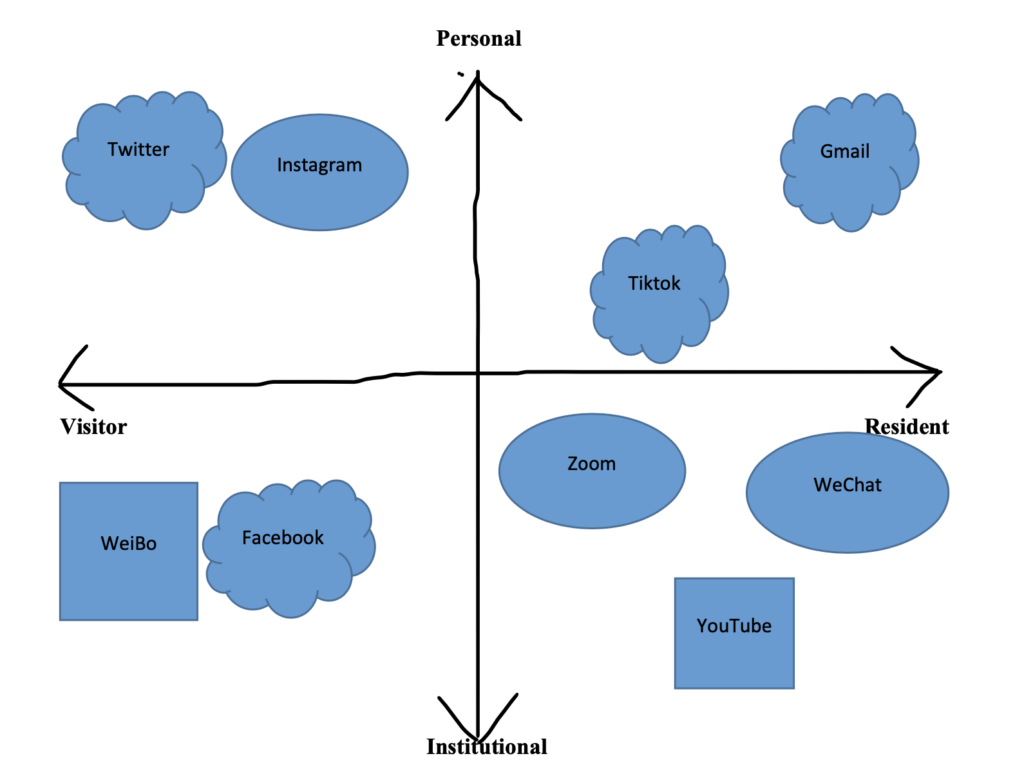PERSONAL DIGITAL IDENTITY
VS
PROFESSIONAL DIGITAL IDENTITY
What digital platforms are students currently using to develop their professional network?
The era of technology has enabled students and job seekers to promote their professional reach and network. The use platforms like LinkedIn, which is considered one of the most professional platforms used to promote professional networks due to its level of professionalism. Its ability to enable its users to provide professional information about themselves and connect with people and employers is excellent (Utz and Breuer, 2019). Using a platform like Twitter for professional networking is excellent because Twitter provides specific hashtags and tweets. An individual should use hashtags and tweets that follow their profession. Platforms like Facebook, Meetup, Quora, Slack, Wistia, YouTube, and Instagram help promote one’s profession (Adjei et al., 2020).
What could the student consider in expanding their professional learning network?
The use of content creation and marketing of works and products in line with one professional is another method that can be used to expand the professional network. The service and production of regular podcasts concerning an individual’s professional is a suitable method. The use of blog spots is also a method to expand one’s network. Writing blogs on new information or findings in your profession helps boost one’s network. The use of Videos to showcase skills and levels of the profession can help expand the professional learning network (Baumann and Utz, 2021).
How does data privacy and security limit and/or promote a PLN?
Limiting and security of data promote professional networks because most employers and companies require credible information about professional skills and abilities from trustworthy sources. An individual’s professional knowledge can be impersonated and used to gain the upper hand on a particular job and reduce the credibility of the actual professional. The use of professionals to scam or con people can tarnish an individual’s credibility or even lead to blacklisting (Alharbi et al., 2021)

References
Adjei, J. K., Adams, S., Mensah, I. K., Tobbin, P. E., & Odei-Appiah, S. (2020). Digital Identity Management on Social Media: Exploring the Factors That Influence Personal Information Disclosure on Social Media. Sustainability, 12(23), 9994. Retrieved from https://www.mdpi.com/2071-1050/12/23/9994
Alharbi, A., Dong, H., Yi, X., Tari, Z., & Khalil, I. (2021). Social media identity deception detection: A survey. ACM Computing Surveys (CSUR), 54(3), 1-35. Retrieved from https://dl.acm.org/doi/abs/10.1145/3446372
Baumann, L., & Utz, S. (2021). Professional networking: Exploring differences between offline and online networking. Cyberpsychology: Journal of Psychosocial Research on Cyberspace, 15(1). Retrieved from https://cyberpsychology.eu/article/view/12562
Utz, S., & Breuer, J. (2019). The relationship between networking, LinkedIn use, and retrieving informational benefits. Cyberpsychology, Behavior, and Social Networking, 22(3), 180-185. Retrieved from https://www.liebertpub.com/doi/full/10.1089/cyber.2018.0294